Weighted blankets are gaining more popularity with each day and if you too get confused looking at a weighted blanket chart, let us explain. A weighted blanket is a blanket filled with natural or artificial filler like glass beads, beans, sand, or steel shot beads to obtain higher, evenly distributed weight.
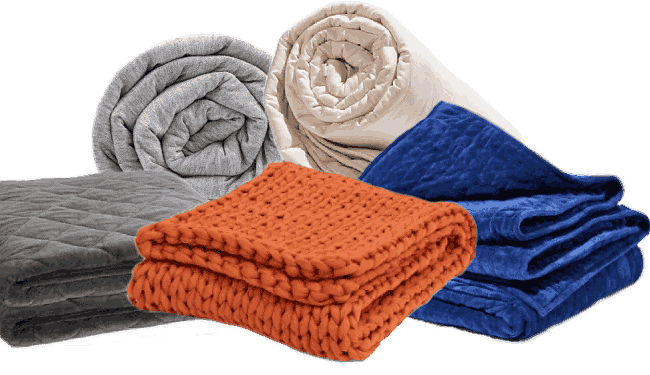
Weighted blankets have a calming and therapeutic effect. It’s designed to help people sleep better because it mimics a hug’s feeling, which boosts serotonin and other feel-good hormones. Anyone can benefit from a weighted blanket, particularly if you suffer from anxiety, restless leg syndrome, PTSD, depression, or insomnia. If you are thinking about purchasing one, use the weighted blanket chart below and continue reading to learn how to choose the right blanket for you.
Who Should Not Use a Weighted Blanket?
Children Under 2 Years
When it comes to children, weighted blankets are considered safe for toddlers over the age of 2. Babies and toddlers under 2 years of age should not use weighted blankets because they lack the strength to manage them in need of pulling off. Babies can suffocate if they get stuck under the blanket.
People suffering from respiratory issues like sleep apnea, asthma & COPD need to avoid weighted blankets. The weight puts tension on their chest and can contribute to difficulty breathing during the night. People with claustrophobia also need to be careful – a weighted blanket might trigger the feeling of being stuck in a small space.
Older adults must consult a doctor or physician before getting a weighted blanket. They have difficulty sleeping, and a weighted blanket can help, but not if they’re too prone to injuries. Weighted blankets are generally safe for pregnant women, but those with high-risk pregnancies need to consult their doctor first.
How to Choose a Weighted Blanket
- Step 1 : Choose the Right Weight »
- Step 2: Choose a Size »
- Step 3: Pick an Appropriate Filling »
- Step 4: Choose a Good Lining »
Weighted Blanket Chart
Weighted Blanket Chart for Adults
For adults, the perfect weighted blanket is 10% of your body weight. For example, if you weigh 150 lbs, look for a blanket that weighs 15 lbs. You can also use the adult weighted blanket chart below as a general guideline to pick out the right weight for you. This formula provides you with the exact weight your body can take without feeling confined or smothered. You get a conforming and comforting feeling, like a gentle hug. If you’re between weights, always go a pound or two heavier.
It’s a rule of thumb, so if you feel like you can go with a heavier or a lighter blanket, go ahead. But have in mind that a very light or a blanket that’s too heavy might not give out the same benefits.
| Body Weight | Weight of Weighted Blanket |
|---|---|
| 100 lbs | 8 – 12 lbs |
| 120 lbs | 10 – 14 lbs |
| 140 lbs | 11 – 17 lbs |
| 160 lbs | 13 – 19 lbs |
| 180 lbs | 14 – 22 lbs |
| 200 lbs | 16 – 24 lbs |
| 220 lbs | 18 – 26 lbs * |
| 240 lbs | 19 – 29 lbs * |
| 260 lbs | 21 – 31 lbs * |
* we generally don’t recommend exceeding 25 pounds
Weighted Blanket Chart for Children
To choose a weighted blanket for a child, apply the same rule; 10% of their body weight plus or minus an additional 1 to 2 pounds. If the child weighs 30 lbs, they need a 3 – 5 lbs weighted blanket; for 40 lbs, they need a 4 – 6 lbs blanket, etc. For your convenience, a children’s weighted blanket chart is provided below. Children shouldn’t use an adult’s weighted blanket since they’re much heavier, larger, and hard to manage. They also shouldn’t be forced to use a weighted blanket if they don’t feel comfortable or dislike the feeling. Weighted blankets can be used in children with special needs but pay extra attention and take precautionary measures.
| Body Weight | Weight of Weighted Blanket |
|---|---|
| 30 lbs | 3 – 5 lbs |
| 40 lbs | 4 – 6 lbs |
| 50 lbs | 5 – 7 lbs |
| 60 lbs | 6 – 8 lbs |
| 70 lbs | 7 – 9 lbs |
| 80 lbs | 8 – 10 lbs |
| 90 lbs | 9 – 11 lbs * |
How to Choose a Weighted Blanket
To experience the full benefits a weighted blanket offers, you must choose the right size, weight, filler, and cover. We’ve simplified the process for you; just answer the question below to pick the right blanket for your needs.
1. How Heavy Should My Weighted Blanket Be?
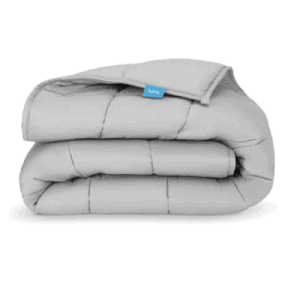
We’ve already mentioned the 10% rule, so step on the scale and look at our weighted blanket chart. If you’re 176 lbs, for example, don’t get a 17 lbs blanket. Round it up to 18 lbs. If your preferred manufacturer doesn’t make an 18 lbs blanket, it’s better to go with a 20 lbs instead of 15 lbs.
The blanket’s weight needs to be heavy enough for deep pressure therapy to work so you can sleep soundly. If you’re wondering, can a weighted blanket be too heavy, the answer is yes. Adults shouldn’t use a blanket heavier than 25 lbs. It’s counterproductive because it causes more stress on your body instead of relief.
2. What Size Weighted Blanket Should I Get?
Don’t look for the same measures in a weighted blanket as you do with your regular blankets and comforters. While other coverings can fall freely over the edges of your bed, your weighted blanket needs to be on the bed.
Weighted blankets must be smaller than regular blankets so that the absolute pressure can be on the user, not on the bed. If the blanket is larger, the filler will shift over the edge and drag it off the bed, ruining the pressure therapy benefit. That’s the same reason why couples need to get separate weighted blankets so each of the partners can enjoy equal pressure.
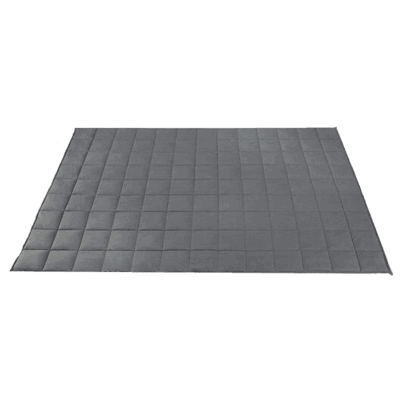
3. What Is The Best Weighted Blanket Filling?
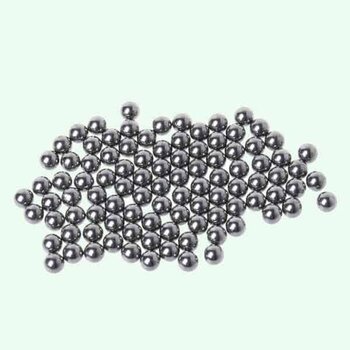
The most frequently used fillers for weighted blankets are micro glass beads, plastic poly pellets, and steel shot beads. They’re durable, can withstand washing and dry cleaning. Your options for natural and organic filler include sand, rice, millet, or beans. Natural fillers are not as resistant and can’t withstand soaking. Sand and rice, for example, accumulate a lot of moisture, so you need to avoid soaking a blanket with these fillers. You can learn more about organic weighted blankets here.
Filler parts need to be small enough not to be felt when laying on them, and pockets need to be proportionally stitched for equal weight distribution and no shifting.
4. What Material Should My Weighted Blanket Lining Be?
Weighted blankets might increase the ambient sleep temperature and cause trouble, especially in hot sleepers or during warmer months. It’s essential to choose an excellent breathable blanket lining that can aid in regulating your body temperature during the night. Those who prefer natural materials can benefit from an organic weighted blanket.
Bamboo and cotton are known as breathable natural materials that can help with temperature and moisture regulation and feel pleasant to the touch. If you don’t have problems with sleeping hot, microfleece and Minky fleece are excellent soft and comforting materials for your blanket lining. Children, in particular, would enjoy these softer linings.
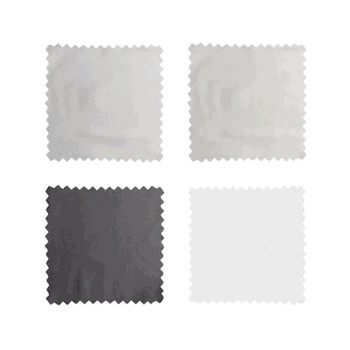
Top 5 Weighted Blankets
Weighted blankets come in all shapes and styles but the best ones should be durable, and high quality. To put this guide together, a total of 30+ weighted blankets were researched and the top 5 weighted blankets have been shortlisted below for you.
| Brand | Cover Material | Fill Material | Available Weight | Why It’s The Best | Price |
|---|---|---|---|---|---|
Bearaby Organic Weighted Blanket | 100% organic cotton | No fill required | 15 – 25 lbs | Best organic weighted blanket | |
Weighted Evolution Blanket | 100% organic bamboo cover | Glass beads | 12 – 25 lbs | Cooling weighted blanket | |
Gravity Weighted Blanket | Micro-fleece cover | Glass beads | 15 – 25 lbs | Best overall weighted blanket | |
Layla Weighted Blanket | 100% cotton & polyester mink | Glass beads | 15 – 25 lbs | Best trial period (120 days) | |
Luna Organic Cotton Weighted Blanket | 100% cotton | Glass beads | 15 – 30 lbs | Most affordable weighted blanket |
What Are The Benefits Of A Weighted Blanket?
For Depression & Anxiety
Weighted blankets mimic a gentle hug and swaddling, which boosts serotonin production, aiding in combating depression and leading to decreased anxiety levels. The deep pressure therapy helps to calm the nervous system, and helps those dealing with insomnia. Getting a full night of restful sleep is a crucial factor in bettering the state of your mental health and overall mood. You wake up rested, feeling great, and ready to tackle the day.
For Chronic Pain
Using a weighted blanket can help when dealing with chronic pain conditions too. Some of them are caused by low serotonin levels, like fibromyalgia. Stress causes an increased production of cortisol and affects the production of serotonin. The deep pressure therapy that a weighted blanket offers releases tension, calms the nervous system, and helps reduce cortisol production. When our brain is calm and relaxed, it produces more serotonin, which lessens chronic pain.
For Special Needs Children
Kids with special needs have a hard time socializing, which additionally increases their stress and anxiety. The pressure a weighted blanket offers helps kids with autism spectrum disorder to calm and focus. They get overwhelmed often, so a weighted blanket serves as an at-home therapy to help them soothe and relax. Sensory blankets for kids with special needs are weighted blankets, just slightly different in design. They’re proven to work for kids with ADHD, autism, and behavioral issues.
For Dogs with Anxiety
A weighted blanket for dogs works the same as it does for humans. Dogs can suffer from separation anxiety or stress caused by loud noises like fireworks and thunderstorms. A weighted blanket offers them comfort and security. Be careful if your dog is a chewer; they can ingest filler. Dogs with short snouts are prone to respiratory issues and shouldn’t be given a weighted blanket. Some skin conditions and allergies in dogs can worsen with the usage of weighted blankets.




